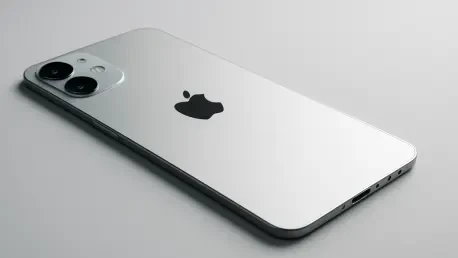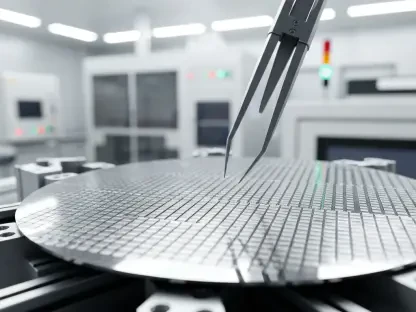What if a smartphone could be so thin it feels like holding a whisper of technology in your hand? Enter the iPhone Air, Apple’s latest masterpiece at just 5.6mm thick, a device that challenges the boundaries of design and engineering while making a bold statement in a world obsessed with sleekness and portability. This isn’t merely a gadget; it’s a glimpse into the future of mobile innovation, raising questions about how far technology can push the limits of form without sacrificing function. The journey into this ultra-slim marvel reveals not just a product, but a vision of what’s next.
The significance of this device lies in its redefinition of what a smartphone can be. As consumers demand lighter, more elegant tools that seamlessly fit into their lives, Apple has responded with a design that prioritizes compactness while navigating the tightrope of performance. This story of precision engineering, revealed through meticulous teardowns and expert analysis, underscores a pivotal shift in the industry toward ultra-thin devices, setting a benchmark for competitors and hinting at revolutionary designs on the horizon.
Unveiling the Thinnest iPhone Yet: Why 5.6mm Matters
At a mere 5.6mm, the iPhone Air stands as a testament to Apple’s relentless pursuit of minimalism in design. This thickness—or lack thereof—transforms the user experience, making the device feel almost weightless, a subtle yet powerful shift in how technology integrates into daily life. The achievement isn’t just about aesthetics; it’s a calculated move to redefine portability in an increasingly mobile world.
Behind this slender profile lies a complex web of innovation that required rethinking every aspect of smartphone construction. From the choice of materials to the arrangement of internal components, Apple has crafted a device that feels like a natural extension of the hand. This milestone sparks curiosity about the sacrifices and breakthroughs needed to shave off every possible millimeter.
The impact of such thinness extends beyond individual users to the broader tech landscape. It challenges manufacturers to rethink bulkier designs, pushing the envelope on what’s possible in a device meant to do everything. This benchmark of 5.6mm isn’t just a number; it’s a signal of intent, hinting at a future where smartphones might become as unobtrusive as a sheet of paper.
The Push for Slimness: Why Ultra-Thin Devices Are the Future
Across the tech industry, the race toward slimmer devices has become a defining battleground, with the iPhone Air leading the charge. Consumers today crave gadgets that slip effortlessly into a pocket or bag, blending elegance with practicality in a way that heavier, bulkier models cannot match. This demand reflects a cultural shift toward minimalism, where less physical presence often equates to more perceived value.
Apple’s focus on thinness aligns with a broader trend that sees competitors scrambling to match or exceed similar feats. The drive isn’t merely cosmetic; it’s rooted in the promise of future technologies like foldable screens, which depend on mastering compact designs now. Statistics from industry reports suggest that sales of ultra-slim devices have risen by 30% over the past two years, signaling a clear market preference.
This momentum toward sleeker profiles also raises critical questions about durability and functionality. While the allure of a feather-light phone captivates, manufacturers must balance this with the need for robust performance. The iPhone Air, as a frontrunner, serves as a case study in navigating these challenges, offering lessons for how the industry might evolve in the coming years from 2025 onward.
Dissecting the iPhone Air: Engineering Marvels Under the Hood
A detailed teardown by tech experts reveals the staggering precision inside the iPhone Air, where components are packed with puzzle-like efficiency. Every piece, from the titanium outer chassis to the ultra-thin aluminum internal structure, showcases a deliberate choice to prioritize slimness. The battery bay, measuring a scant 0.255mm thick, exemplifies the razor-thin tolerances Apple engineers worked within to achieve this form factor.
Specific comparisons to other models highlight the trade-offs made for this design. The rear glass panel, at 0.6mm, is thicker than the 0.45mm of the iPhone 17 Pro, while the screen slims down to 0.919mm compared to 0.987mm in its counterpart. Additionally, the 2.8mm-thick battery, with a capacity of 3,149mAh, demonstrates how space optimization took precedence over sheer power, a decision that shapes the device’s capabilities.
Perhaps most striking is the motherboard’s expanded footprint, a necessity to avoid stacking height, and a mirrored FaceID module that speaks to bespoke engineering solutions. These choices, while innovative, reveal the constraints of crafting a device this thin. Each element, meticulously arranged, paints a picture of compromise and creativity, pushing the boundaries of spatial design in smartphones.
Expert Insights and Industry Perspectives on Apple’s Design Choices
Industry analysts have weighed in on Apple’s approach, noting that the iPhone Air prioritizes finesse over raw power, a philosophy evident in its internal layout. Observations from teardown analyses highlight the meticulous engineering, such as the mirrored FaceID module, as a clever adaptation to spatial limits. One expert remarked, “Apple’s focus on integration over expansion shows a clear intent to master thinness as a core brand value.”
Comparisons with competitors reveal both strengths and gaps in this strategy. The Air’s battery energy density, ranging between 783-800Wh/L, falls short of rivals like the vivo X200 FE at 845Wh/L and experimental prototypes from Realme reaching up to 1,200Wh/L. This disparity suggests that while Apple excels in design harmony, battery technology remains an area where others are gaining ground.
These insights paint a balanced picture of Apple’s position in the market. The emphasis on compactness is lauded as visionary, yet the lag in energy density sparks debate about long-term competitiveness. Such perspectives from industry voices provide a nuanced understanding of how far Apple has come—and where challenges still loom on the horizon.
Learning from the iPhone Air: What’s Next for Slim Tech Design
The intricate teardown of the iPhone Air offers a roadmap for future smartphone designs, particularly in how it balances aesthetics with utility. Apple’s method of prioritizing component integration over larger battery sizes hints at a potential shift in consumer expectations, where sleekness might outweigh raw endurance. This approach could redefine purchasing decisions, as users weigh the allure of a slim device against practical needs.
Looking ahead, the lessons from this device suggest a trajectory toward foldable technologies, where thinness will be paramount. Manufacturers might adopt similar strategies, focusing on material innovations and spatial efficiency to craft devices that bend and fold without bulk. The iPhone Air, in this sense, acts as a precursor, testing concepts that could dominate the market in the near future.
For tech enthusiasts and everyday users alike, understanding these design choices provides clarity on evolving trends. The trade-offs, such as a modest battery density, underscore the reality that ultra-slim devices require sacrifices. As the industry learns from Apple’s blueprint, the next wave of smartphones may offer refined solutions, blending thin profiles with enhanced performance in ways yet to be imagined.
In reflecting on the journey through the iPhone Air’s ultra-slim design, it becomes evident that Apple has set a formidable standard in engineering precision. The meticulous arrangement of components and material innovations has redefined what a smartphone can embody in terms of elegance and portability. Each detail, from the titanium chassis to the razor-thin battery bay, tells a story of calculated risk and creativity.
Looking back, the insights gained from expert analyses and industry comparisons have illuminated both triumphs and hurdles. As the tech world digests these lessons, the path forward seems to call for a deeper focus on battery technology to match the strides made in design. The challenge for Apple, and indeed for all manufacturers, is to bridge that gap, ensuring that future devices can offer both breathtaking thinness and uncompromised power.
Ultimately, the legacy of this device points toward actionable steps for innovation. Manufacturers need to invest in energy density research while continuing to refine spatial optimization. For consumers, the takeaway is a reminder to advocate for balanced advancements, pushing the industry to deliver devices that don’t just impress with form, but also deliver enduring functionality for years to come.









